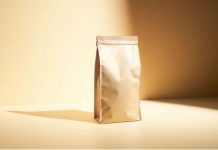Polycarbonate Prices, Regional Analysis, and Industry Demand
In the following post, the Polycarbonate definition, uses, properties, and price analysis have been covered, providing an in-depth analysis of the commodity’s demand dynamics.


Polycarbonate Explained
Polycarbonate (PC) is a type of plastic (thermoplastic) with organic functional groups connected by carbonate groups (–O–(C=O)–O–) that is tough and transparent. It offers various advantages like stiffness, strength, and impact resistance, making it an ideal raw material for end-uses like signs, face shields, machine guards, skylights, architectural glazing, and POP displays. It has a wide spectrum of applications due to it being more sustainable and recyclable.
Polycarbonate Properties Propelling Its Market Growth
- Strength – Polycarbonate is basically indestructible compared to plastic; hence, owing to its excellent strength and durability, it finds use in a wide range of safety products like riot shields, bulletproof glass, and safety glazing.
- Clearness – The commodity is a clear material which makes it ideal for end-uses like its application as glazing in summerhouses, greenhouses, and conservatories. It is usually treated with UV protective filters that offer protection from the sun.
- Usability – The material is comparatively lighter and offers excellent impact-resistance properties, making it an easy material to use in DIY and engineering applications. It is easy to bend, cut, and fix with bolts, nuts etc., making it great for thermoforming and machining.
- Heat – polycarbonate is classified as a thermoplastic, which implies that it can be reformed under some temperatures. It also offers dimensional stability and resistance to shock and humidity.
Polycarbonate Applications Driving the Product’s Demand
- In Electronic Components – Polycarbonate is primarily employed in electronics due to its safety features. As it is a good electrical insulator, resistant to heat and also works like a flame retardant which makes it ideal for several products like electrical and telecommunications hardware. Apart from that, it is also used in high-stability capacitors as a dielectric.
- In Construction Materials – The commodity is also extensively used in the construction sector, which includes its use in sound walls, dome lights, and flat or curved glazing.
- For Data Storage – Polycarbonate has applications in the production of DVDs, Compact Discs, and Blu-ray Discs. These discs are made by injecting moulding polycarbonate in a mould cavity that includes one side of the metal stamper that contains the disc data’s negative image. In contrast, the other mould side is a mirrored surface.
- Automotive, Aircraft, And Security Components – In the automotive sector, injection moulded polycarbonate makes extremely smooth surfaces that are ideal for making direct metalised parts, including decorative bezels and optical reflectors. By using its uniform mould shrinkage, greater accuracy in parts can be achieved compared to those made of polypropylene. It might be laminated to create bullet-proof glass in windows, automobiles etc.
- Niche Applications – Polycarbonate is widely used to make various types of lenses, such as lighting lenses, sunglass/eyeglass lenses, safety glasses and automotive headlamp lenses. Apart from that, other products such as Ocarinas, visors, MP3/Digital audio player cases, computer cases, blender jars, riot shields, and instrument panels can also be made. Also, items like toys etc., are made using polycarbonate parts, for instance, gyro mounts, fins, as well as fly bar locks that are used with radio-controlled helicopters.
Polycarbonate Production Processes
- Polycarbonate Production from Bisphenol A (BPA or Bis-A) and Diphenyl Carbonate (DPC): During this process, polymerisation depends on the diphenyl carbonate (DPC) transesterification with bisphenol A, referred to as the Melt process. The product derived is undiluted and can be directly pelletised to get polycarbonate finally.
- Polycarbonate Production from Bisphenol A (BPA or Bis-A) and Carbonyl Chloride via Condensation Polymerisation: During this method, a bisphenol A solution is formed in sodium hydroxide which further gets combined with a carbonyl chloride solution mixed in an organic solvent like dichloromethane. Next, taking the help of a catalyst (essentially an amine), the process of polymerisation is carried out. As the polycarbonate is made in an inorganic layer, the removal of the aqueous layer is done. The derived product is then evaporated, forming the polycarbonate (polymer).
Polycarbonate Market Participants Mentioned
- Covestro AG
- SABIC
- Teijin Limited
- Trinseo S.A.
- Mitsubishi Chemical Corporation (Mitsubishi Engineering-Plastics Corp.)
Polycarbonate Price Trend Movement Bifurcated On The Basis Of Region
North America
In the past few months, the Polycarbonate price surged in the market in North America. The high pressure of cost from the feedstock Bisphenol A caused a negative impact on the downstream derivative industries. The domestic market in the US witnessed a struggle in demand for Polycarbonate and costs remained under additional stress to rising interest rates and soaring prices for downstream automotive parts. Regional plants have boosted activities by a little in order to facilitate the market, and carriers followed an upward trend with adequate terminal acceptance. The level of participation was increased by downstream epoxy factories and intermediate traders.
APAC
Recently, the Polycarbonate market sentiments saw a declining trend in the Asian region. The expenses from exporting countries such as South Korea and Thailand extenuated in addition to a drop in consumption from the downstream sector.
The freight costs in Asia continued plummeting with global disputes. As far as supply is concerned, more than sufficient goods are on-site, increased inventory, frail demand, and buyers’ wait-and-see market sentiments have been prevalent for a few months now. India recently witnessed a price boost in the Polycarbonate market due to the festive season.
Europe
The Polycarbonate price saw an upward trajectory recently owing to the region’s rise in prices of natural gas and raw materials along with a risen operational price. Since thetensions between Russia and Ukraine have been tumefying due to the war, the countries in Europe have undergone major headwinds because of a scarcity in prices of natural gas and elevated costs for the available material.
Polycarbonate production’s operational cost in the region was seen soaring. In September, many German ports were congested, the nation was disrupted by the supply chain, and the level of product inventory was low in the market. The average demand from the downstream industries, including automotive and electrical & electronics, propelled the cost in the northern direction.
Procurement and supply chain of certain commodities are pivotal to the businesses revolving around them. Hence, understanding the implications, price dynamics, industrial whirlwinds, economic implications, regulations, and so on are essential to the propulsion of businesses.
















